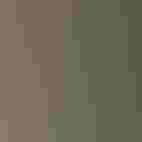Black-crested Titmouse
At a Glance
A characteristic bird of much of southern and central Texas, barely extending northward into southwestern Oklahoma. This is a close relative of the Tufted Titmouse of eastern North America, and was treated as a subspecies at one time. Where the ranges of the two species meet in east-central Texas, they sometimes interbreed, producing hybrids that may show a dark gray crest and a reddish brown forehead.
All bird guide text and rangemaps adapted from by Kenn Kaufman© 1996, used by permission of Houghton Mifflin Harcourt Publishing Company. All rights reserved.
Category
Perching Birds
IUCN Status
Least Concern
Habitat
Forests and Woodlands, Shrublands, Savannas, and Thickets
Region
Texas
Behavior
Direct Flight, Flitter
Population
1.200.000
Range & Identification
Migration & Range Maps
Permanent resident, seldom wandering any distance.
Description
6" (15 cm). Mostly gray and white with white forehead, black crest, orange tinge on flanks. Where range meets that of Tufted Titmouse, they interbreed, and some birds have intermediate markings.
Size
About the size of a Sparrow, About the size of a Robin
Color
Black, Brown, Gray, Reddish Brown, Tan, White, Red
Wing Shape
Rounded
Tail Shape
Rounded, Square-tipped
Songs and Calls
Song similar to that of Tufted Titmouse, peter-peter-peter. One-noted song is more common in Black-crested than in Tufted Titmouse.
Call Pattern
Falling
Call Type
Buzz, Chirp/Chip, Whistle
Habitat
Brushlands, woods, riverside groves. Occurs widely in south Texas brush country, but may be more common in taller trees along rivers. Found in some well-wooded suburbs and parks within its range.
Sign up for ³Ô¹ÏºÚÁÏ's newsletter to learn more about birds like the Black-crested Titmouse
Behavior
Eggs
5-6, sometimes 4-7. White, finely dotted with brown, reddish, or purple. Incubation is probably by female only, 12-14 days.
Young
Female stays with young much of time at first, while male brings food; later, young are fed by both parents, sometimes by additional helper. Young leave nest about 15-16 days after hatching.
Feeding Behavior
Forages by hopping actively among branches and twigs of trees, often hanging upside down, sometimes hovering momentarily. Often drops to the ground for food as well. Comes to bird feeders for seeds or suet. Opens acorns and seeds by holding them with feet and pounding with bill. Will store food items, retrieving them later.
Diet
Mostly insects and seeds. Insects make up the majority of the annual diet, with caterpillars the most important prey in summer; also eats wasps, bees, beetles, true bugs, and many others, including many insect eggs and pupae. Also eats some spiders and snails. Seeds, nuts, berries, and small fruits are important in diet, especially in winter.
Nesting
Pairs may remain together all year, joining mixed flocks with other small birds in winter. Flocks break up in late winter, and pairs establish nesting territories. Nest site is in hole in tree, either natural cavity or old woodpecker hole; usually 3 to 20 feet above the ground. Will also use nest boxes. Nest (probably built by female) has foundation of grass, moss, leaves, bark strips, lined with soft materials, especially animal hair.
Conservation
Conservation Status
Common in its U.S. range, numbers apparently stable.
Climate Threats Facing the Black-crested Titmouse
Choose a temperature scenario below to see which threats will affect this species as warming increases. The same climate change-driven threats that put birds at risk will affect other wildlife and people, too.





